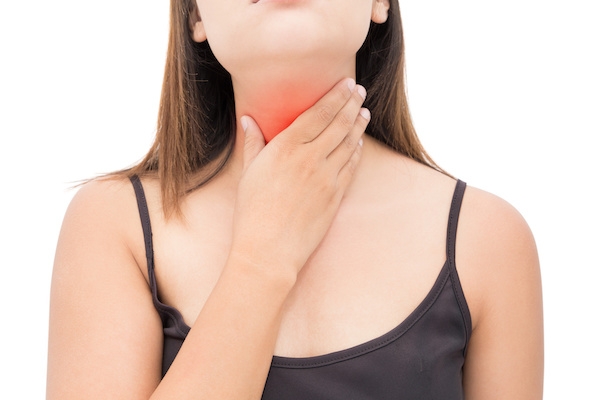Type 2 Achalasia is a rare esophageal motility disorder where the esophagus has difficulty pushing food into the stomach due to abnormal muscle contractions. Unlike Type 1 Achalasia, which features a weak or absent contraction, Type 2 involves non-propulsive, uncoordinated contractions that cause significant discomfort. Managing symptoms effectively requires a combination of medical, surgical, and lifestyle interventions tailored to the individual’s needs. The most effective treatments for Type 2 Achalasia.
Understanding Type 2 Achalasia Symptoms
Patients with Type 2 Achalasia may experience:
- Difficulty swallowing (dysphagia) for solids and liquids.
- Chest pain or discomfort.
- Regurgitation of undigested food.
- Weight loss due to difficulty eating.
- Episodes of aspiration leading to coughing or respiratory issues.
Recognizing these symptoms early can significantly improve management outcomes.
Top Treatments for Type 2 Achalasia
1. Medications to Relax the Esophagus
Medications can help reduce muscle spasms and improve esophageal function. Common options include:
- Calcium channel blockers: Relax the lower esophageal sphincter (LES) to allow food passage.
- Nitrates: Help reduce esophageal spasms.
- Botox injections: Administered directly into the LES to temporarily relieve symptoms, particularly in patients unfit for surgery.
2. Minimally Invasive Procedures
Balloon Dilation
Endoscopic balloon dilation involves stretching the LES to facilitate food passage. It is a first-line treatment for many patients with good short-term success rates. However, repeated procedures may be necessary.
Related Articles: 8 Herbal Treatments for Achalasia
Peroral Endoscopic Myotomy (POEM)
POEM is a cutting-edge, minimally invasive procedure where an endoscope is used to make precise cuts in the LES muscles. This helps reduce resistance and improve swallowing. POEM is increasingly becoming the preferred treatment due to its high success rates and quick recovery time.
3. Surgical Intervention
Heller Myotomy
This surgical option involves cutting the LES muscle to allow better food flow into the stomach. Often performed laparoscopically, Heller myotomy is effective for long-term symptom relief.
To prevent acid reflux, the procedure is usually combined with a partial fundoplication, where the top of the stomach is wrapped around the LES.
4. Dietary Adjustments
Dietary modifications can significantly improve quality of life for individuals with Type 2 Achalasia:
- Opt for soft, pureed, or liquid foods.
- Avoid carbonated beverages, as they can increase pressure in the esophagus.
- Eat smaller, more frequent meals.
- Drink water while eating to help food pass through the esophagus more easily.
5. Managing Reflux Symptoms
Since treatments like myotomy may predispose patients to acid reflux, managing it is crucial:
- Use proton pump inhibitors (PPIs) to reduce stomach acid.
- Elevate the head while sleeping to prevent nighttime reflux.
6. Lifestyle Changes
Incorporate these lifestyle modifications to reduce symptoms:
- Avoid eating close to bedtime.
- Maintain a healthy weight to reduce pressure on the esophagus.
- Practice stress-reduction techniques, as stress can exacerbate symptoms.
Importance of Follow-Up Care
Regular follow-up appointments with a gastroenterologist are essential for monitoring disease progression and treatment effectiveness. If symptoms persist or worsen, additional interventions like repeat dilation or surgical revisions may be required.
Related Articles: Achalasia Cure Symptoms, Diagnosis Diet Treatment
Type 2 Achalasia FAQs
Type 2 Achalasia is a rare esophageal motility disorder that can cause significant discomfort and disruption to daily life. Below, we’ve compiled answers to some of the most frequently asked questions about this condition.
1. What is Type 2 Achalasia?
Type 2 Achalasia is a subtype of achalasia, a condition where the esophagus (the tube that carries food from the throat to the stomach) has difficulty moving food due to a lack of proper muscle contractions. In Type 2 Achalasia, there is increased pressure in the esophagus due to the simultaneous contraction of esophageal muscles, which can lead to food and liquids being trapped.
2. What are the symptoms of Type 2 Achalasia?
Common symptoms include:
- Difficulty swallowing (dysphagia)
- Regurgitation of undigested food
- Chest pain or discomfort
- Weight loss
- Heartburn or a sensation of food stuck in the chest
3. How is Type 2 Achalasia diagnosed?
Diagnosis typically involves a combination of tests, such as:
- Barium Swallow: X-rays taken after swallowing a barium solution to observe the esophagus’s function.
- Esophageal Manometry: Measures the pressure and coordination of esophageal muscles.
- Endoscopy: A camera inserted into the esophagus to check for abnormalities.
4. What causes Type 2 Achalasia?
The exact cause is not well understood, but it is believed to involve nerve damage in the esophagus, possibly due to autoimmune factors or viral infections. Unlike conditions like gastroesophageal reflux disease (GERD), achalasia is not caused by lifestyle factors.
5. What treatment options are available for Type 2 Achalasia?
Treatment focuses on relieving symptoms and improving esophageal function. Options include:
- Medications: Muscle relaxants (e.g., nifedipine or isosorbide dinitrate) may provide temporary relief.
- Botox Injections: Temporary paralysis of the muscles to reduce pressure.
- Balloon Dilation: Expanding the esophagus’s lower sphincter.
- Heller Myotomy: Surgical cutting of the esophageal sphincter muscle.
- Peroral Endoscopic Myotomy (POEM): A less invasive endoscopic procedure to reduce muscle pressure.
6. Is Type 2 Achalasia curable?
There is no cure for Type 2 Achalasia, but treatments can effectively manage symptoms and improve quality of life. Early diagnosis and intervention can help prevent complications.
Related Articles: Life After Achalasia Surgery: Transform Your Digestive Health
7. Can Type 2 Achalasia lead to complications?
If untreated, Type 2 Achalasia can cause complications such as:
- Aspiration pneumonia (from inhaling food or liquids)
- Severe weight loss
- Esophageal dilation (enlargement of the esophagus)
8. Is dietary management important for Type 2 Achalasia?
Yes, making dietary changes can help reduce symptoms. Tips include:
- Eating smaller, more frequent meals
- Avoiding very dry or hard-to-swallow foods
- Drinking water with meals to aid swallowing
- Staying upright for at least an hour after eating
9. Can lifestyle changes help with Type 2 Achalasia?
While lifestyle changes can’t cure the condition, they can help alleviate symptoms:
- Avoid lying down immediately after eating
- Maintain a healthy weight
- Manage stress, as it may exacerbate symptoms
10. Are there support groups for people with Type 2 Achalasia?
Yes, many online and local support groups provide information, emotional support, and resources for people living with achalasia. Talking to others who understand your experience can be beneficial.
11. What should I ask my doctor about Type 2 Achalasia?
Consider asking:
- Which treatment is best for my condition?
- Are there any risks or side effects of treatment?
- How can I manage symptoms in the long term?
- Should I see a specialist for my condition?
12. Can Type 2 Achalasia be misdiagnosed as another condition?
Yes, symptoms of Type 2 Achalasia can mimic other conditions, such as GERD or esophageal cancer. This is why accurate diagnostic tests like manometry are essential.
Conclusion
Managing Type 2 Achalasia requires a multi-faceted approach that includes medical treatment, dietary adjustments, and sometimes surgical intervention. With the right strategies, patients can significantly improve their quality of life and minimize discomfort. If you suspect you have Type 2 Achalasia or are struggling with symptoms, consult a healthcare provider for a tailored treatment plan.




